2021 Phenix TL-2 Natural Leather Helmet
$650.00 – $920.00Price range: $650.00 through $920.00
Specifications
-
Weight: Approximately 55 oz (1.56 kg)
-
Shell: Top-grade, vegetable-tanned leather with a high-temperature thermoplastic dome
-
Impact Protection: Closed-cell energy impact cap
-
Suspension System: Exclusive Phenix liner with a custom comfort pad; adjustable from 6½” to 7¾” (XS and XL available upon request)
-
Chinstrap: Black Nomex with a postman slide or combination quick-release buckle
-
Earlaps: 8″ detachable, made from Nomex and fire-retardant cotton
-
Eye Protection: NFPA-compliant goggles with a long strap
-
Finial: American-made Rising Phenix finial
-
Reflective Markings: Lime-yellow tetrahedrons for visibility
-
Compliance: Meets NFPA 1971 and OSHA standards
Traditional Fire Helmet
A traditional fire helmet is more than just protective gear—it’s a symbol of firefighting heritage. Built with a classic leather or composite design, it represents durability, honor, and the long-standing traditions of fire service. Firefighters choose traditional helmets not only for their style but also for their proven safety and comfort in the field.
Key Features of a Traditional Fire Helmet
1. Durable Outer Shell
-
Made from high-quality, heat-resistant materials such as leather, fiberglass, or advanced thermoplastics.
-
Provides protection from falling debris, heat, and impact during firefighting operations.
2. Reinforced Crown
-
The top of the helmet (crown) is reinforced to protect against falling objects and structural hazards.
-
Traditional helmets often feature a slightly elongated shape for added deflection.
3. Leather or Fiberglass Construction
-
Classic fire helmets, especially traditional ones, often use premium leather or layered fiberglass for a balance of strength and flexibility.
-
Leather helmets are iconic in style and can last decades with proper care.
4. Brim Design
-
Wide rear brim protects the firefighter’s neck from water, embers, and debris.
-
Front brim may be shorter to improve vision and movement in tight spaces.
5. Suspension System
-
Adjustable inner suspension (headband and liner) distributes the weight evenly for comfort.
-
Helps absorb shock from impacts and keeps the helmet securely in place.
6. Face and Eye Protection
-
Many helmets accommodate a built-in face shield or goggles for protection against heat, smoke, and flying particles.
-
Shields are often retractable for convenience.
7. Identification and Badges
-
Front shield or badge space for displaying department name, rank, or unit number.
-
Enhances visibility and identification on the scene.
8. Heat and Flame Resistance
-
Materials are designed to withstand extreme temperatures without deforming or losing protective properties.
9. Lightweight yet Strong
-
Traditional helmets balance durability with a manageable weight to reduce neck strain during extended operations.
10. Timeless Design
-
Distinctive look with long history in firefighting heritage.
-
Often passed down through generations or customized with department-specific markings.
Here’s a detailed explanation of why firefighters choose a traditional fire helmet, which highlights both practical and cultural reasons:
1. Superior Protection
-
Traditional fire helmets are designed with durable materials like leather, fiberglass, or reinforced composites.
-
They provide excellent protection from falling debris, heat, and impacts in firefighting environments.
2. Heat and Flame Resistance
-
These helmets withstand extreme temperatures, helping firefighters stay safe during intense fires.
-
Materials are chosen to resist melting, cracking, or deforming under high heat.
3. Comfortable Fit
-
Adjustable suspension systems and padded liners ensure the helmet sits securely without causing fatigue.
-
Proper weight distribution reduces neck strain during long operations.
4. Functional Design
-
The wide rear brim protects the neck from hot water, embers, and debris.
-
Front brim is designed for visibility and easy movement in tight spaces.
5. Face and Eye Protection
-
Many traditional helmets accommodate goggles or face shields to protect from sparks, smoke, and flying debris.
-
Shields can be raised or lowered as needed for convenience.
6. Durability and Longevity
-
With proper care, leather and fiberglass helmets can last decades, making them cost-effective in the long run.
-
Many firefighters value helmets that can withstand repeated use over time.
7. Heritage and Pride
-
Traditional helmets carry a sense of history and pride in the firefighting profession.
-
They are symbolic, often customized with badges or colors representing a department or rank.
8. Customization Options
-
Firefighters can personalize traditional helmets with department logos, reflective markings, and other identifiers.
-
This enhances visibility and department representation on the scene.
9. Trusted Performance
-
Generations of firefighters have relied on traditional helmets, proving their effectiveness in real-world conditions.
-
The design has evolved to balance modern safety standards with classic, proven features.
Traditional Fire Helmet vs. Modern Fire Helmets
1. Materials and Construction
-
Traditional Fire Helmets: Typically made from leather or layered fiberglass, offering durability and heat resistance. Leather helmets have a timeless design and can last decades with proper care.
-
Modern Fire Helmets: Often constructed from advanced thermoplastics or composite materials, which are lighter and can offer enhanced impact resistance.
2. Design and Shape
-
Traditional Helmets: Iconic shape with a long rear brim for neck protection and a high crown for deflecting falling debris. They are instantly recognizable as classic firefighting gear.
-
Modern Helmets: Sleeker, more compact designs for improved mobility and reduced weight. Rear brims may be shorter or contoured differently, focusing on modern ergonomics.
3. Weight
-
Traditional Helmets: Generally heavier due to leather or thick fiberglass construction. Can cause fatigue over long periods but offers robust protection.
-
Modern Helmets: Lighter, reducing neck and shoulder strain, which is especially beneficial in prolonged firefighting scenarios.
4. Safety Features
-
Traditional Helmets: Excellent heat resistance, built-in suspension systems, and the ability to attach face shields or goggles. Time-tested protection for structural fires.
-
Modern Helmets: Advanced impact absorption, integrated communication systems, reflective strips, and improved compatibility with SCBA (Self-Contained Breathing Apparatus) masks.
5. Customization and Identification
-
Traditional Helmets: Easily personalized with department badges, colors, and markings. Often used to signify rank or unit.
-
Modern Helmets: Customization is possible but often limited by helmet shape and material. Emphasis is more on functional features like reflective surfaces.
6. Heritage and Tradition
-
Traditional Helmets: Carry a sense of history and pride. Many firefighters choose them for ceremonial purposes or personal preference.
-
Modern Helmets: Focused on cutting-edge safety, efficiency, and practicality for active firefighting.
7. Longevity
-
Traditional Helmets: Extremely durable if maintained, with the potential to last decades.
-
Modern Helmets: Durable but may require replacement sooner due to technological updates or material wear.
Here’s a detailed guide on caring for your traditional fire helmet to ensure it stays safe, durable, and looking great:
1. Regular Cleaning
-
Leather Helmets: Use a soft, damp cloth to remove dust and soot. Avoid harsh chemicals that can dry out the leather.
-
Fiberglass Helmets: Wipe with mild soap and water. Rinse thoroughly and dry with a soft cloth.
2. Conditioning Leather
-
Apply a high-quality leather conditioner periodically to keep the leather supple and prevent cracking.
-
Avoid over-conditioning, which can make the leather too soft and affect its protective qualities.
3. Inspect for Damage
-
Check the shell for cracks, dents, or heat damage. Even small defects can reduce protection.
-
Inspect the suspension system, chin strap, and liner to ensure they are intact and secure.
4. Protect from Moisture
-
Avoid storing the helmet in damp or wet areas, which can cause mold or weaken leather over time.
-
After exposure to water, dry the helmet naturally in a cool, ventilated space. Do not use direct heat.
5. Store Properly
-
Store the helmet on a helmet stand or shelf to maintain its shape.
-
Keep it away from direct sunlight, which can fade colors and dry out leather.
6. Avoid Harsh Chemicals
-
Do not use solvents, alcohol-based cleaners, or bleach, as these can damage the helmet materials.
7. Regular Maintenance of Accessories
-
Clean face shields, goggles, and badges regularly to maintain visibility and professional appearance.
-
Replace worn-out straps, liners, or hardware promptly.
8. Handle with Care
-
Even though traditional helmets are durable, avoid dropping or throwing them, which can weaken the structure or cause unseen damage.
Frequently Asked Questions (FAQ) – Traditional Fire Helmets
1. What is a traditional fire helmet?
A traditional fire helmet is a classic firefighting helmet made from durable materials like leather or fiberglass. It’s designed to protect firefighters from heat, impact, and falling debris while maintaining a timeless design.2. How is a traditional fire helmet different from a modern fire helmet?
Traditional helmets feature leather or fiberglass construction, a long rear brim, and a high crown. Modern helmets are often made from lightweight composites or thermoplastics, designed for ergonomic comfort, advanced safety features, and integration with modern gear.3. Why do some firefighters still choose traditional fire helmets?
Many firefighters value traditional helmets for their proven heat resistance, durability, heritage, and ability to display department badges or colors. They combine protection with a sense of history and pride.4. How do I care for my traditional fire helmet?
Regular cleaning, conditioning leather, inspecting for damage, proper storage, and avoiding harsh chemicals are key. Following these steps ensures longevity and continued protection.5. Can traditional fire helmets be customized?
Yes. Firefighters can personalize traditional helmets with badges, decals, reflective strips, and other identifiers to represent their department, rank, or unit.6. How long does a traditional fire helmet last?
With proper care, a traditional fire helmet can last decades. Leather helmets, in particular, are known for their long lifespan when maintained correctly.7. Are traditional fire helmets safe for modern firefighting?
Yes. While modern helmets offer lighter weight and extra technological features, traditional helmets still provide excellent protection from heat, impact, and falling debris when properly maintained.8. What materials are traditional fire helmets made from?
Most traditional fire helmets are made from premium leather, fiberglass, or a combination of reinforced materials designed for heat and impact resistance.9. Can I wear a traditional fire helmet with SCBA gear?
Yes. Many traditional helmets can accommodate modern SCBA (Self-Contained Breathing Apparatus) facepieces, though some adjustments or adapters may be needed for optimal fit.10. Where can I buy a traditional fire helmet?
Traditional fire helmets are available through specialized firefighting gear suppliers, online retailers, and some custom manufacturers that provide department-specific customization options.Traditional Fire Helmet Specifications
1. Material:
-
Outer Shell: High-quality leather or layered fiberglass for heat and impact resistance.
-
Inner Liner: Heat-resistant padding for comfort and shock absorption.
2. Weight:
-
Typically ranges from 3.5 to 4.5 lbs (1.6–2 kg), depending on material and size.
3. Crown Design:
-
Reinforced high crown to deflect falling debris and provide structural strength.
4. Brim:
-
Rear brim: Wide and elongated to protect the neck from heat, water, and embers.
-
Front brim: Shorter for improved visibility and maneuverability.
5. Suspension System:
-
Adjustable headband with padded liner for a secure and comfortable fit.
-
Shock-absorbing straps to reduce impact during falls or collisions.
6. Face and Eye Protection:
-
Compatible with retractable face shields or goggles for protection against sparks, smoke, and debris.
7. Heat Resistance:
-
Can withstand temperatures up to 500°F (260°C) or higher, depending on material.
8. Customization Options:
-
Front shield or badge for department name, rank, or unit number.
-
Optional reflective strips or decals for visibility in low-light conditions.
9. Standards Compliance:
-
Meets NFPA 1971 standards for structural firefighting helmets (varies by manufacturer).
10. Color Options:
-
Available in traditional colors such as black, red, yellow, or custom department-specific colors.
-
-
-
-
| Options | Band New Medium size, Brand New Large size, Refurbished Medium size, Refurbished Large size |
|---|
Be the first to review “2021 Phenix TL-2 Natural Leather Helmet” Cancel reply
Related products
Phenix Fire Helmets
Phenix Fire Helmets
Phenix Fire Helmets
Phenix Fire Helmets
Phenix Fire Helmets
Phenix Fire Helmets
Phenix Fire Helmets
Phenix Fire Helmets






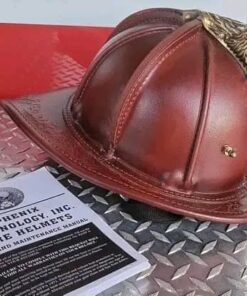





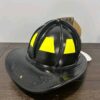



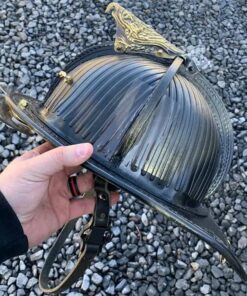



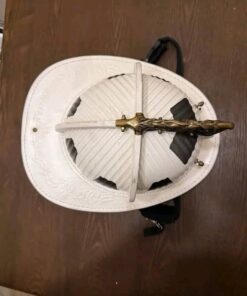
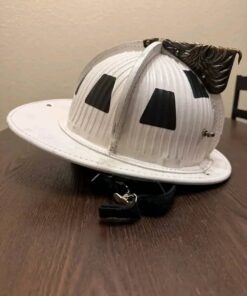
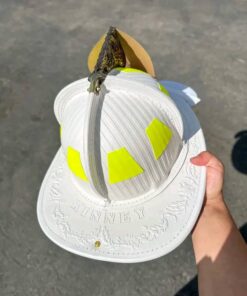
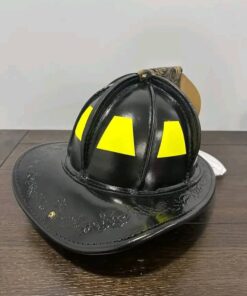


Reviews
There are no reviews yet.